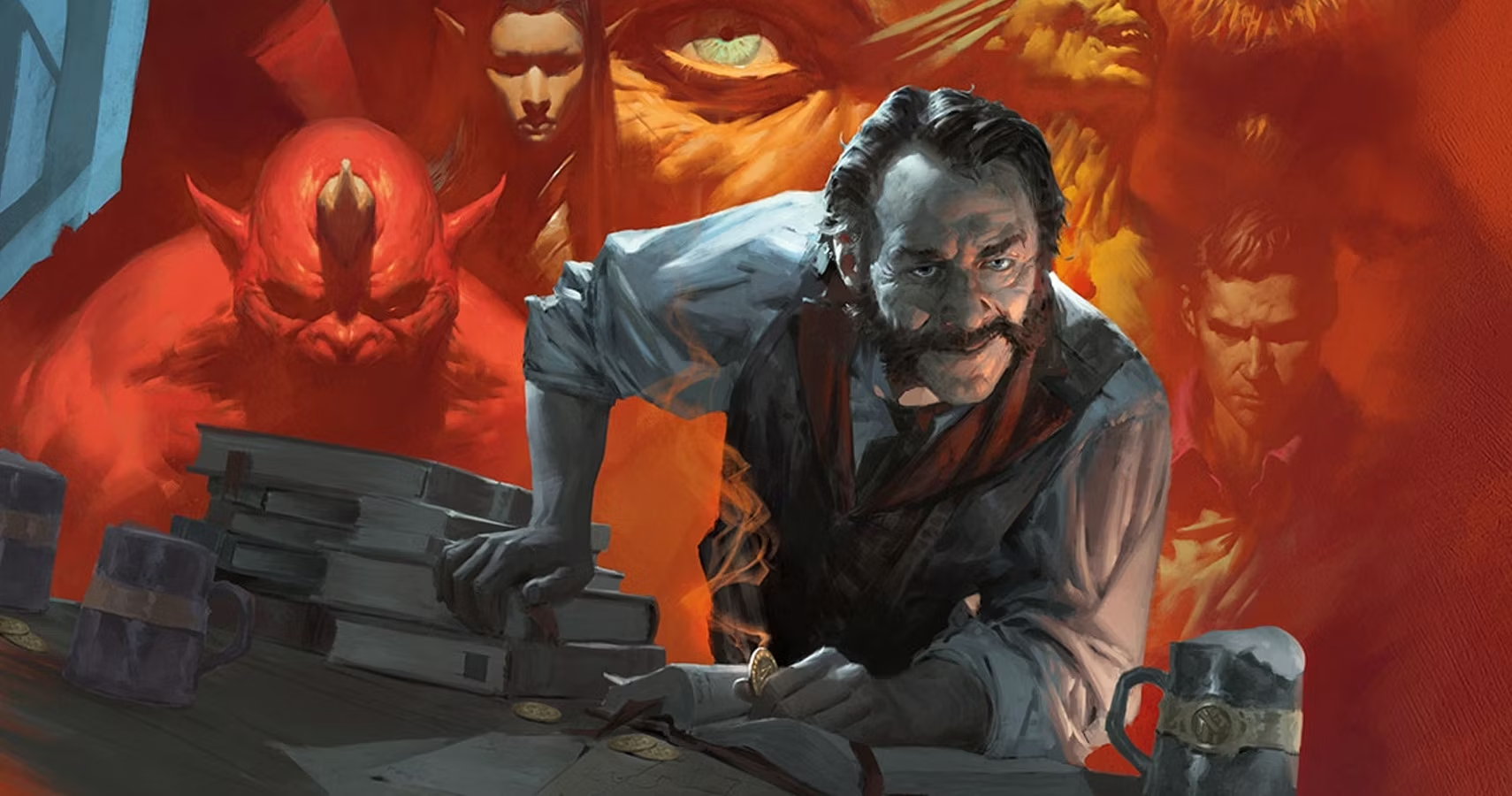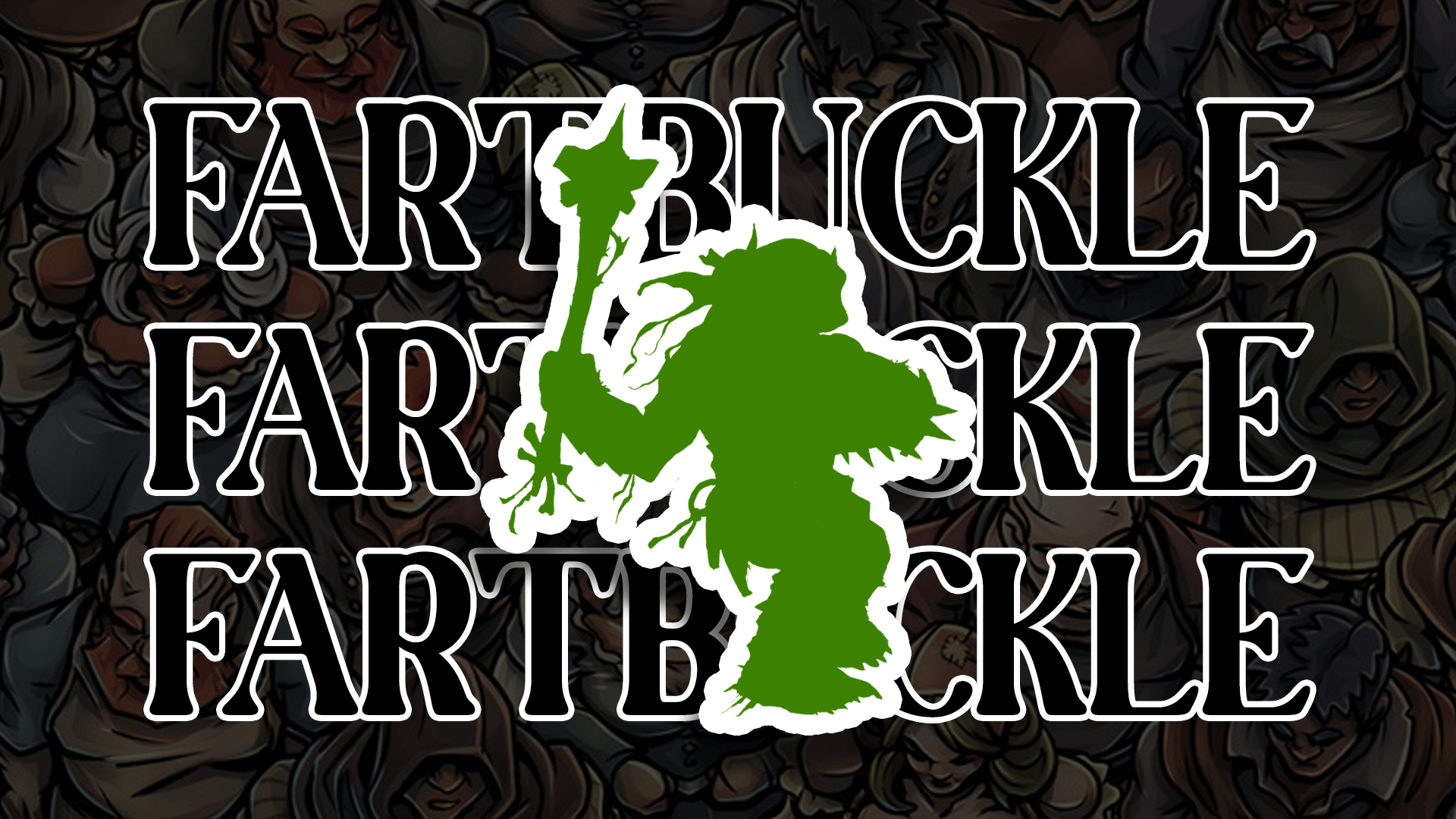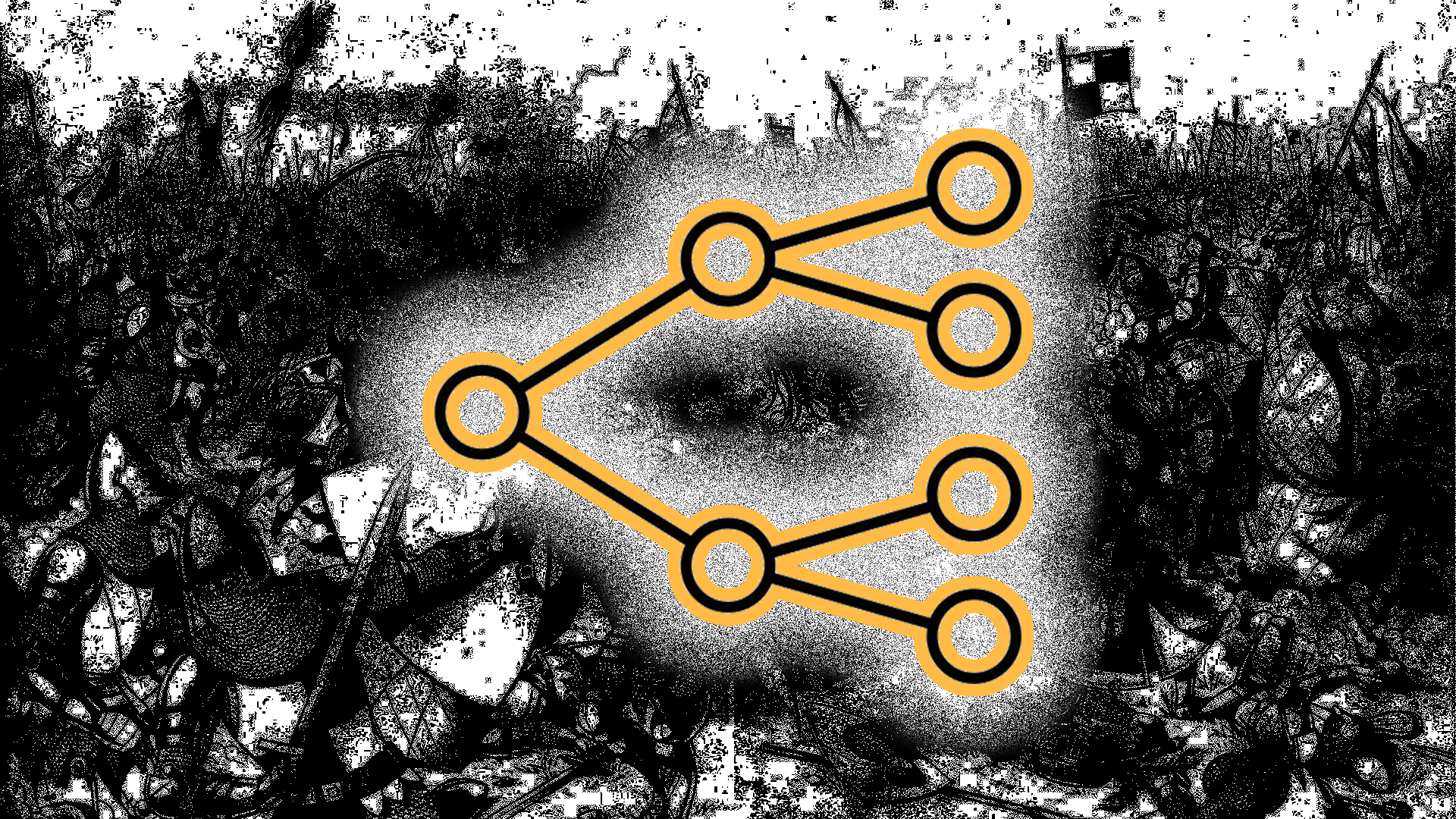Fartbuckle the Goblin (I am a professional blogger I swear) has taken Tiktok by storm for its depiction of an NPC sacrificing its life for the sake of the party over the stellar song, “Lithonia” by Childish Gambino. This made me think about what made a good NPC and why Fartbuckle is a perfect example.

What is an NPC?
What do those three letters even mean before we delve into creating our perfect companion? NPC stands for Non-Player Character or Non-Playable Character depending on the game or system. For Dungeons and Dragons, we at Knight’s Digest lean towards Non-Player Character as the Dungeon Master is the one taking on the role and not the party themselves.
An NPCs role is to add depth to the game and make the world seem more realistic. They can range from a quick altercation with some guards or be villains that the party gets to know in deep and meaningful ways that expand or change the story. There are many different types of NPCs and as a DM, you should have a brief idea of what they are in order to play them more effectively in your games.
Types of NPC’s
The Dungeon Master’s Guide (DMG) has an entire chapter dedicated to Creating NPCs and I’ll therefore reference some of it in this article as I do in my own campaigns. There are two questions you should ask yourself when you create an NPC. First, are they a one-time character or are they one that will have a lot of screen time in your games? Second, what will their role be within the game itself?
Quick versus Detailed NPCs
A “quick” NPC is one that doesn’t require a lot of prep and can even be made up on the spot. For example, your party might be exploring cities along the Sword Coast and a player might need to stop for spell components. It would be a waste of everyone’s time if you stopped mid-game and came up with a complicated stat block of abilities and a background of nuanced storytelling.

Quick NPC
All you would need in this situation is a name (which we recommend Fantasy Name Generator that we wrote about in Our Best Dungeon and Dragons Tools for Dungeon Masters Article), a memorable quirk like a tattoo or eyepatch, and their occupation for right there and then. More experienced DMs can do this on the fly but if you’re like me, I still like to have a table of traits like the one mentioned in the DMG.
A big downfall is that if things escalate into a fight, you might fear that you won’t have a statblock at the ready, and will mess up the flow of the fight. To this I would point you to the back of the DMG or the Player’s Handbook where there are quick statblocks for this exact situation. I have used the Noble, Bandit, and Guard statblock more times than I can count. The key to keep things fresh is to give them unique moves in battle such as being more defensive or running away when the fight looks dire.
Detailed NPC
For Detailed NPCs, I would recommend that you as the DM sit down and do some prep outside of the game during your downtime. These are for your Big Bad Evil Guys and important people you meet along your adventure. I follow what the DMG says and describe one sentence for the following (which I have done below for Fartbuckle the Goblin):
| Details for Fartbuckle the Goblin | Example |
|---|---|
| Occupation and History | Lookout for his tribe’s hunting party. He has lived with this tribe his entire life |
| Appearance | He’s a small, scruffy goblin with a bright, mismatched jester’s hat that’s seen better days. |
| Abilities | Fartbuckle has a knack for setting off harmless but extremely smelly magical traps, much to the annoyance of everyone around him. |
| Talent | He can mimic almost any sound perfectly, but he mostly uses this talent to imitate bodily noises. |
| Mannerism | He constantly fidgets, tapping his feet or drumming his fingers, and laughs at his own jokes before finishing them. |
| Interactions with Others | Fartbuckle is annoyingly friendly, always trying to make everyone his “best buddy” through relentless and obnoxious flattery. |
| Flaw or Secret | He’s terrified of actual combat and will do anything to avoid a fight, including pretending to faint or hiding under a rock. |
| Useful Knowledge | Fartbuckle knows the location of a hidden goblin treasure but insists that it’s guarded by “the biggest, meanest, stinkiest ogre ever.” |
| Ideal | Everything should be shared by everyone. |
| Bond | He has a deep loyalty to his old tribe, despite being exiled for letting enemies slip by. |


Total Party Kill Productions
Delve into the Dungeon
Step into the world of adventure with these Dungeon Delver Club shirts—the depths are calling, answer the call!
You can make it as complex or as simple as you want. The details aren’t something you have to memorize either, just keep them in mind when you are interacting with the party or in combat for interesting narrative reasons. For example, what would the NPC do if after being befriended by your party, they have to decide what to do when their old tribe shows up to attack his new friends? Answering these questions about your character’s details will help you create a well-rounded persona that you can use to either assist or torment your players with flair.
Along with the table above, I would create a Statblock that I would keep nearby in case I need to reference it. But that is something that we will discuss later in this article.
Different Roles an NPC Can Play
As I said earlier, NPCs are supposed to add depth and realism to your game. Just as in real life, your NPCs should differ and have their own flair. Here are some basic types of characters that I implement into my games.

Low-Level Followers
Fartbuckle the Goblin would be a good example of the “Low-Level Follower” trope. These NPCs are often weaker than the party and can either be helpful or pose as a risk to the rest of the party. I love to introduce child characters for this very reason. I once had my party go out to a witch’s hut and then find out when it was too late that they had a small child from the village follow them out there due to his admiration for the knight in the group. The NPC thought that he could help them but they ended up being someone the party had to protect while also fighting off a deadly encounter.
Seasoned Adventurer
Sometimes I have games where only a couple of my friends are able to show up. That is when I pull out the odd NPC to fill out the rest of the ranks. This lets you continue with the game as planned and adds a new flavor to the mix of the campaign.
I also like to add knowledgeable NPCs to help the party get on track. For example, I added a random Vampire Hunter character to a One-Shot I did in order to help my party get back to slaying monsters. They also helped my party understand the vampire on a deeper level and gain knowledge that they were able to use to defeat the creature itself.
Contacts
Contacts are NPCs that don’t really go on adventures but are good at giving the party what they need. This can range from supplies, rumors, or advice. About 80-90% of my contacts in my game are shop owners or bar keeps. They act as a reliable source of information and the party can go to them if they have trouble figuring out a solution on their own. If you want to make it more realistic, I would throw in some false rumors or bad advice. Not everyone in real life is a wise sage and I like to throw that bad bit of realism into my games for memorable and hilarious encounters.

Hirelings or Patrons
These are NPCs that the party or another group either hires or is being paid by. I have very few patrons who aren’t a rich noble or nefarious group that is trying to pull the strings behind the scenes. While I like Patrons, I personally feel as if they railroad the party a bit and therefore don’t use them very often.
As for hirelings, I usually throw them into the same group as the “seasoned adventurer” as they do similar actions but for a price. They usually do their jobs off-screen and then come back when the job is done. If you want to mix things up or show how powerful an evil bad guy is, have your party find your experienced and known-for-a-good-job hireling dead in a ditch. This would show the party that the person they are about to fight is no one to scoff at. Another fun idea is that after the party pays the hireling, have them run off with the money and never be seen again. It’ll make social encounters more interesting in the future if done right and will show the party that not everyone is on their side.
Extras
Most extras don’t even speak. They are the crowd in a ballroom or patrons in a tavern. They only speak when spoken to and are only whisked into the story by the party themselves.
Villian
Last but certainly not least is the Big Bad Evil Guy! This NPC can range from a low-level boss for a gang of thieves or the end-of-game villain that needs to be stopped to save the world or universe.
The DMG has an EXCELLENT table for schemes, methods, and weaknesses. Along with a lot of different villain class options examples if you are having trouble coming up with a fresh and new villain.
I put a lot of time into the villain’s backstory as your party will (or should be at least) be thinking about them a lot during their time. For the most part, the villain is the end goal of your game and after they are defeated, the campaign usually end soon after. This doesn’t count for side quests and personal vendettas, but I feel as if a good villain would have a hand in why the group goes on adventures in the first place.
How to Generate an NPC Statblock for Dungeons and Dragons
As I mentioned before, if I need a quick statblock, I go to the end of the PHB or the DMG as they have a ton of quick ready-to-go options that would work well for most combat situations.
If I have to create one on the spot, I usually create the basic stats for STRENGTH, DEXTERITY, CONSTITUTION, INTELLIGENCE, WISDOM, and CHARISMA. After playing and looking at stat blocks for a while now, you can usually guesstimate what this would be for the NPC you’re creating. For example, a wizard would probably have a higher intelligence compared to a barbarian. A good guide is that 1 is the worst at something, 5 is subpar, 10 is average, 15 is great, and 20 is phenomenal.

How to Roleplay NPCs
Roleplaying NPCs can vary based on the type of story you want to tell with your friends. For example, I love good political intrigue so I spend more time learning how to talk like a politician like in my article Using Machiavelli to Make Your Stories Better. In that article, nobility would go about things much differently than a petty thief would.
My biggest recommendation would be to look at the table and look at the details you wrote down for your more detailed NPCs and decide what they would do, and not so much what you would do.
That’s all for now! We’d love to hear your favorite NPC in your game in the comments below. If you want to read more, sign up for our newsletter or Discord!
Halt!
Take A Moment and Support Knight’s Digest!
Adventurers, if you’ve enjoyed the content we’ve worked so hard to create, we humbly ask for your support. Running Knight’s Digest takes countless hours of dedication, creativity, and passion, and we’d love your help to keep our dungeon full of treasure (and coffee).
If you think we’ve earned it, consider donating to help us continue crafting the stories, resources, and ideas you love.
Make a one-time donation
Make a monthly donation
Make a yearly donation
Choose an amount
Or enter a custom amount
Your contribution is appreciated.
Your contribution is appreciated.
Your contribution is appreciated.
DonateDonate monthlyDonate yearly









Leave a Reply